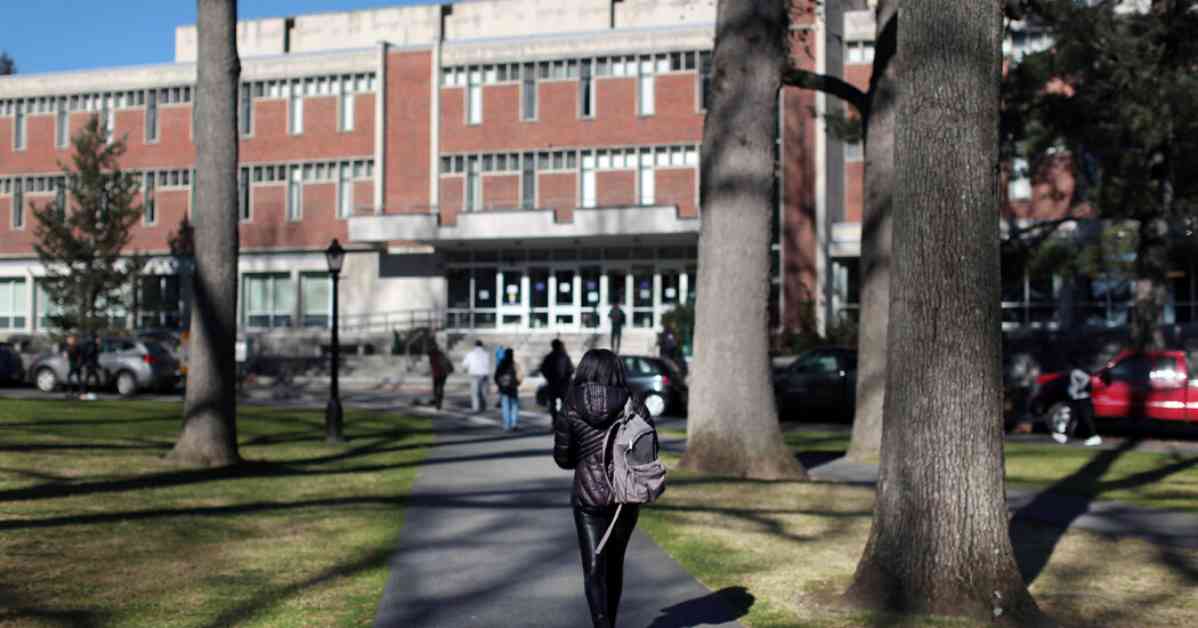The Impact of Affirmative Action Ban on Racial Diversity at Elite Colleges
In a recent shift in racial makeup at two elite colleges, Amherst College and Tufts University, the effects of a Supreme Court decision ending affirmative action are becoming apparent. The percentage of Black students entering Amherst College this fall dropped to 3 percent from 11 percent last year, reflecting a significant decrease in racial diversity. This trend was also observed at Tufts University, where the share of Black students decreased moderately. These developments raise concerns about the impact of ending affirmative action on racial diversity at selective institutions of higher education.
The Decline in Black Enrollment
The decline in the share of Black first-year students at Amherst College and Tufts University serves as an early indicator of the consequences of the Supreme Court’s decision to end affirmative action. The data released by these institutions show a noticeable decrease in the representation of Black students in their incoming classes. This decline is particularly striking at Amherst College, where the percentage of Black students dropped by eight percentage points. Similarly, Tufts University also experienced a decrease in the share of Black students, albeit to a lesser extent.
Effects on Other Minority Groups
While the focus has been on the decline in Black enrollment, it is important to consider the impact of the affirmative action ban on other minority groups. At Amherst College, the data revealed a sharp increase in the percentage of white students enrolling, along with a slight rise in the percentage of Asian American students. This shift in demographic composition highlights the complex interplay of factors affecting racial diversity in higher education institutions following the Supreme Court’s ruling.
Emerging Trends in Higher Education
The recent data from Amherst College, Tufts University, and other institutions suggest that the end of affirmative action is reshaping the landscape of higher education in unexpected ways. The Massachusetts Institute of Technology’s announcement of a significant drop in Black enrollment further underscores the far-reaching implications of the Supreme Court’s decision. As more colleges and universities release their enrollment figures, a clearer picture is emerging of how the ban on race-conscious admissions is impacting diversity on campus.
Challenges to Diversity and Inclusion
The Supreme Court’s decision to prohibit race-conscious admissions has raised concerns about the future of diversity and inclusion in higher education. Advocates of affirmative action have warned that eliminating race as a factor in admissions could lead to a less diverse student body, with negative consequences for underrepresented minority groups. The data from Amherst College, Tufts University, and other institutions provide early evidence of these challenges and underscore the need for ongoing efforts to promote diversity and equity in higher education.
The Role of Admissions Practices
The ruling against affirmative action marks a significant departure from decades of admissions practices aimed at promoting diversity and equal opportunity in higher education. Colleges and universities that previously used race-conscious admissions policies are now grappling with how to achieve diversity without considering race as a factor. The shift in enrollment patterns at Amherst College, Tufts University, and other institutions reflects the complexities of this transition and the uncertainty surrounding the future of diversity efforts on campus.
Implications for Society
The changes in racial diversity at elite colleges following the affirmative action ban have broader implications for society as a whole. The Supreme Court’s decision has the potential to impact not only higher education but also the workforce, politics, and social dynamics in the United States. By restricting the use of race in admissions decisions, the ruling may inadvertently perpetuate disparities and inhibit progress toward a more inclusive society. As colleges and universities grapple with the aftermath of the decision, it is clear that the effects of ending affirmative action will reverberate far beyond campus boundaries.
Moving Forward
As institutions like Amherst College and Tufts University navigate the new landscape of admissions without affirmative action, it is crucial to prioritize diversity and inclusion in alternative ways. The challenges posed by the Supreme Court’s ruling underscore the importance of proactive measures to promote equity and access for all students, regardless of their background. By engaging in thoughtful and intentional efforts to enhance diversity on campus, colleges and universities can help mitigate the negative effects of the affirmative action ban and create a more inclusive learning environment for all.
